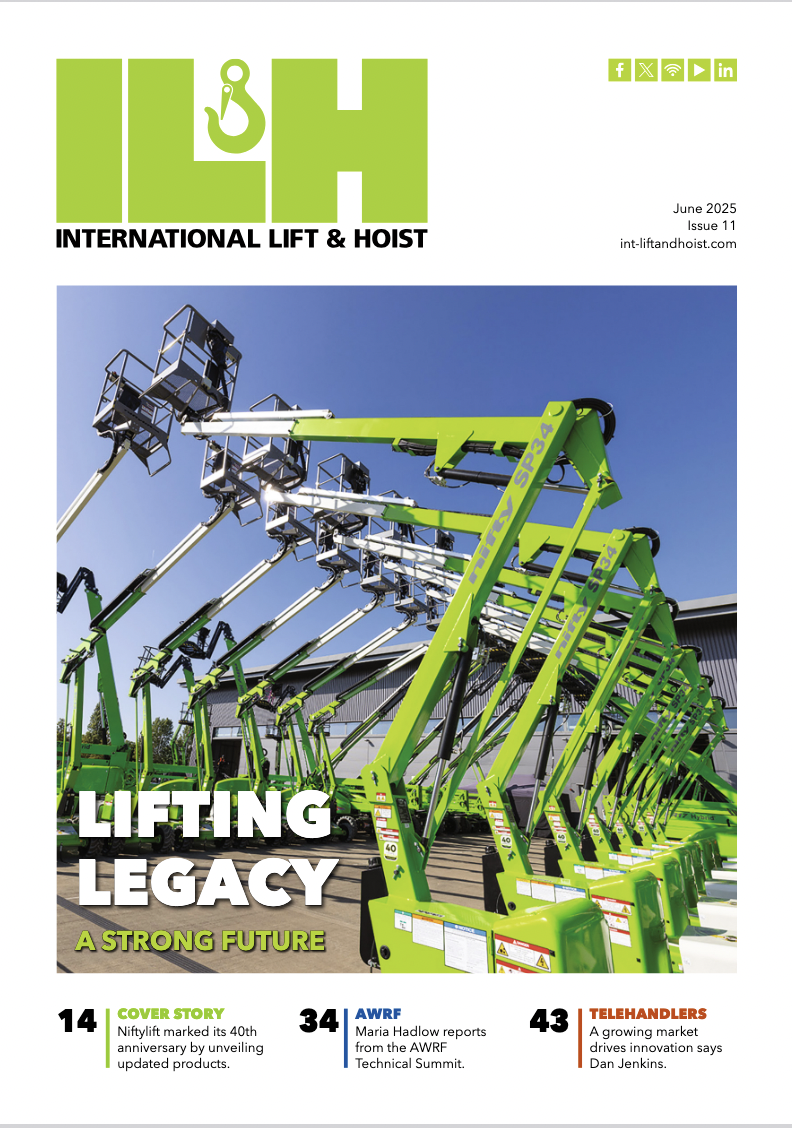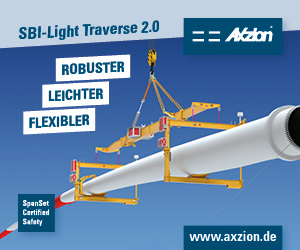)
Getting rental right
Rental accounts for around four in every five aerial lift sales worldwide. Dan Jenkins examines how equipment manufacturers are addressing such an important market – and explores how rental companies are adapting their fleet mix to meet changing customer needs.
Globally, the MEWP rental fleet hit a major milestone last year when it reached 1.5 million units. IPAF’s 2019 Global Powered Access Rental Market Report noted particularly strong growth in France and Italy (+7%), the Netherlands (+8%) and Spain and Germany (+9%). This is the latest version at the time of going to press; the 2020 report is not yet available.
The economic uncertainty wrought by a global pandemic has dampened growth in 2020, but the rental sector remains the dominant market for MEWPs. Because of rental’s pre-eminence for aerial lifts, the equipment manufacturers tend to work hand in glove with rental companies to ensure new or improved products meet rental fleet needs.
Chinese manufacturer Sinoboom is putting rental companies at the heart of its drive to grow market share in Europe and North America. The company recently opened its European headquarters, Sinoboom BV, in the Netherlands city of Rotterdam, with former head of IPAF Tim Whiteman as its CEO.
Tim Whiteman says “At Sinoboom BV, we are continuously in conversation with rental companies. Their own requirements, plus insights from their customers, are active drivers for the direction Sinoboom’s product innovation takes.”
Direct sales
Sinoboom’s preference is for a direct sales model to rental companies rather than selling through distributors. To this end, the company has recruited well, with Julie Houston Smyth appointed to oversee Sinoboom’s activities in the UK and Ireland, and José Miguel Peña hired to look after Spain and Portugal. Smyth has a great deal of rental company experience, having spent 25 years at Highway Plant, an independent powered access rental company based in Northern Ireland, including 18 as its director. Across the Atlantic Ocean, Sinoboom North America opened in July in Houston, Texas, under the guidance of CEO Kolin Kirschenmann.
Skyjack built its business around serving access rental companies. Malcolm Early, vice-president of marketing at Skyjack, says, “Skyjack’s focus has always been the rental industry and so our many product innovations and industry firsts have been for, and as a result of, our involvement in the rental sector for aerial work platforms and telehandlers.
“What that means in practice is that a rental company uses our product as an asset through which they look to gain a return on investment. Skyjack’s approach has been to focus on designs that provide that return; not design for design’s sake. The question always has to be: ‘What customer return does that feature drive?’ If the answer is ‘little or none’ then we do not incorporate that feature.”
Skyjack also sells direct in most markets – and where it does use distributors, it is careful not to blur the lines between rental companies and dealers. “In most markets, our sales approach is direct to rental customers,” added Early. “In a few markets, distributors do play a role. Unlike some OEMs we do not use rental companies as main distributors. To us that seems somewhat of a contradiction, as a rental company that distributes is in fact a competitor to its customers.”
Return on investment
For several years now, Genie has consistently focused on return on investment for rental companies, which it defines as rROIC – rental return on invested capital. Genie states: “This is rooted in having a deep understanding of how rental companies do business, and the foundation of our approach to developing our next equipment innovations.
“Our goal with any innovation is to determine how it will benefit our customers’ rental business, and how they will improve their rROIC by owning/operating our equipment. It’s about reducing total cost of ownership, not just the acquisition cost.”
Genie also recognises that calculating rROIC can be very different for a small independent compared to a multinational. “It’s about understanding how rental companies operate because companies with multiple locations nationwide make decisions differently than Mom and Pop shops do. When it comes down to it, the machines we create and manufacture at Genie have to make money for our customers, no matter the size of their business. And for the people who own these machines, they need equipment that will give them a good rROIC.”
Underpinning this focus is a strategy of developing machines which add value, leading to higher utilisation rates and better returns; while also continuing to reduce downtime through machines that are easier to maintain and have longer periods between services.
Hird, a UK-based rental company with a strong focus on the industrial and aerospace sectors, says Genie aerial lifts are among its most popular products. Phil Moss, director at Hird, says “The most popular boom lifts for industrial use are the Genie Z-30/20 NRJ and for scissor lifts it is the Genie GS-1932.
“Both are popular because they’re compact and easy to manoeuvre and deliver the right working height for industrial environments. In the case of the Z-30/20 it is 10.89m and for the 1932 it’s 7.8m. The Z-30/20 NRJ also has zero tail swing which is also clearly important when working with confidence in confined spaces.
“We also offer personnel mast booms. But, to be honest, most customers stick to the slightly larger scissors and booms, partly because they have the capacity for up to two personnel and more tools and materials.”
Skyjack says that performance undoubtedly plays its part in a product’s popularity. “Since the focus of our efforts is rental, our range reflects the needs of the industry,” says Early. However, there are some leading rental classes. In scissors, that is the 19 to 20ft class and Skyjack’s SJ32319 has been the major player in that class. In booms, we look at the 60ft class and Skyjack’s SJ63AJ has class leading performance.”
For Sinoboom BV, rental sector interest is highest in its electric slab scissor lifts. CEO Tim Whiteman says: “The Sinoboom electric scissor lift range is very popular. They are attractive, reliable, clean-energy MEWPs with options for indoor, outdoor and mixed-use work, giving our rental clients’ customers a great choice suited to a wide variety of applications – warehousing, facility management, maintenance and many more.”
Rental trends
UK rental company Hird has undergone expansion due to increased demand for its powered access fleet and other equipment such as its glass lifts. The company recently opened a fourth depot in the UK and expanded its delivery truck fleet. Moss says this is partially due to the response to coronavirus.
“One of key additional drivers for us is demand from cleaning contractors as a result of the COVID-19 pandemic,” says Moss. “Hires to cleaning firms operating in industrial environments are up by around 20%. Feedback we are getting is that cleaning regimes have intensified. Both ground level and high-level cleaning has been increased in response to COVID-19 concerns.”
He added, “In many industrial environments, such as food and pharmaceutical production, high level cleaning is still important. My sense is that companies want to be able to reassure employees, customers and regulators that every aspect of their facilities maintenance is COVID-19 secure.”
Another ongoing trend in rental is the wider adoption and use of telematics. Skyjack’s Early says, “Skyjack has seen marked success in telematics with its Elevate product. Here Skyjack reinvented the telematics package from one that was dominated by features relevant to the transportation sector to one, which was directed at off-road, and rental industry needs. That means focused data points relevant to off road fleet management, less data driven cost and a move way from messy monthly billing.”
Sinoboom BV also recognises the importance of telematics to European rental companies. “Telematics are also an increasing interest, and machines which incorporate telematic functions are an option in all Sinoboom BV products,” says Whiteman.
Greener fleets
The other key trend in Europe is moving to more environmentally-friendly machines – a trend picked up by IPAF in its 2019 Powered Access Rental Report. “Electric energy is undoubtedly a key trend,” added Whiteman. “Many rental customer sectors are focused on environmental concerns, where fewer emissions is a distinct advantage. Sinoboom BV has a wide range of electric scissor lifts on offer and will be introducing electric boom lifts into the European market later in the year.”
German rental company Seeger GmbH recently took delivery of two of Germany’s first hybrid Genie Z-45 FE hybrid boom lifts. Adding to the three Genie Z-60 FE hybrid units it already owns, it is part of Seeger’s strategy to expand its mixed mid-sized boom offering.
Karlheinz Seeger, owner and managing director of Seeger GmbH says, “Offering the right mix of machines in our rental fleet is a key focus. The specifications of the new Genie Z-45 FE boom convinced us as we always aim to provide our customers with precisely the right machine for the job.”
Along with its ability to work purely off the battery power, a key feature of the Z-45 FE boom is its unrestricted 300kg (660 b) lift capacity. Together, these features aim it squarely at applications including contract work in inner city and pedestrian zones, general construction, airports, manufacturing plants, warehouses, museums, convention centres and malls.
“The choice of business opportunities provided by these new Genie Z-45 FE hybrid models is wide,” added Seeger. “Examples range from warehouse and industrial construction in the 16m working height range when 300kg lift capacity is a must-have to many more.
“We are now seeing increasing demand from end users for environment-friendly solutions. The addition of our two new Genie Z-45 FE hybrid booms complements our 16 to 20m boom line to adapt to an even broader field of applications to meet our customer’s needs. This particular model’s 300kg [660lb] lift capacity is a real plus.”
Using the same hybrid technology as the Genie Z-60 FE, the Z-45 FE boom lift offers two modes of operation – diesel or electric. “In the past, customers would have rented a diesel machine,” says Seeger. “However, they now find that with Genie hybrid boom lifts they can combine the advantages of the latest fuel-electric technology to achieve the power performance they need to work productively and comply with their customers’ demands.
“From shops in pedestrian zones that want to renovate their facades or have their windows cleaned, but do not want to go for scaffolding or perturb people due to noise and exhaust fumes, to schools that need work done without causing disturbance and polluting the air, these Genie hybrid solutions are ideal,” he explains. “And when end-users are satisfied, they come back.”
A longstanding Genie customer, Seeger believes the flexibility of hybrid booms will drive return on investment. “Genie diesel articulating booms are as solid as rocks and their electric equivalents work flawlessly,” he said. “This means that rates of utilization are high and maintenance costs are very low, making them a profitable investment.
“There is of course more technology involved with hybrid, and durability is a key factor. In terms of profitability, if our Genie hybrid units work out to be as reliable as their earlier Genie articulating boom models, given the rate of end-user demand, there is no doubt that we will continue to move with current trends and invest in more ‘green’ Genie machines in the future.”











